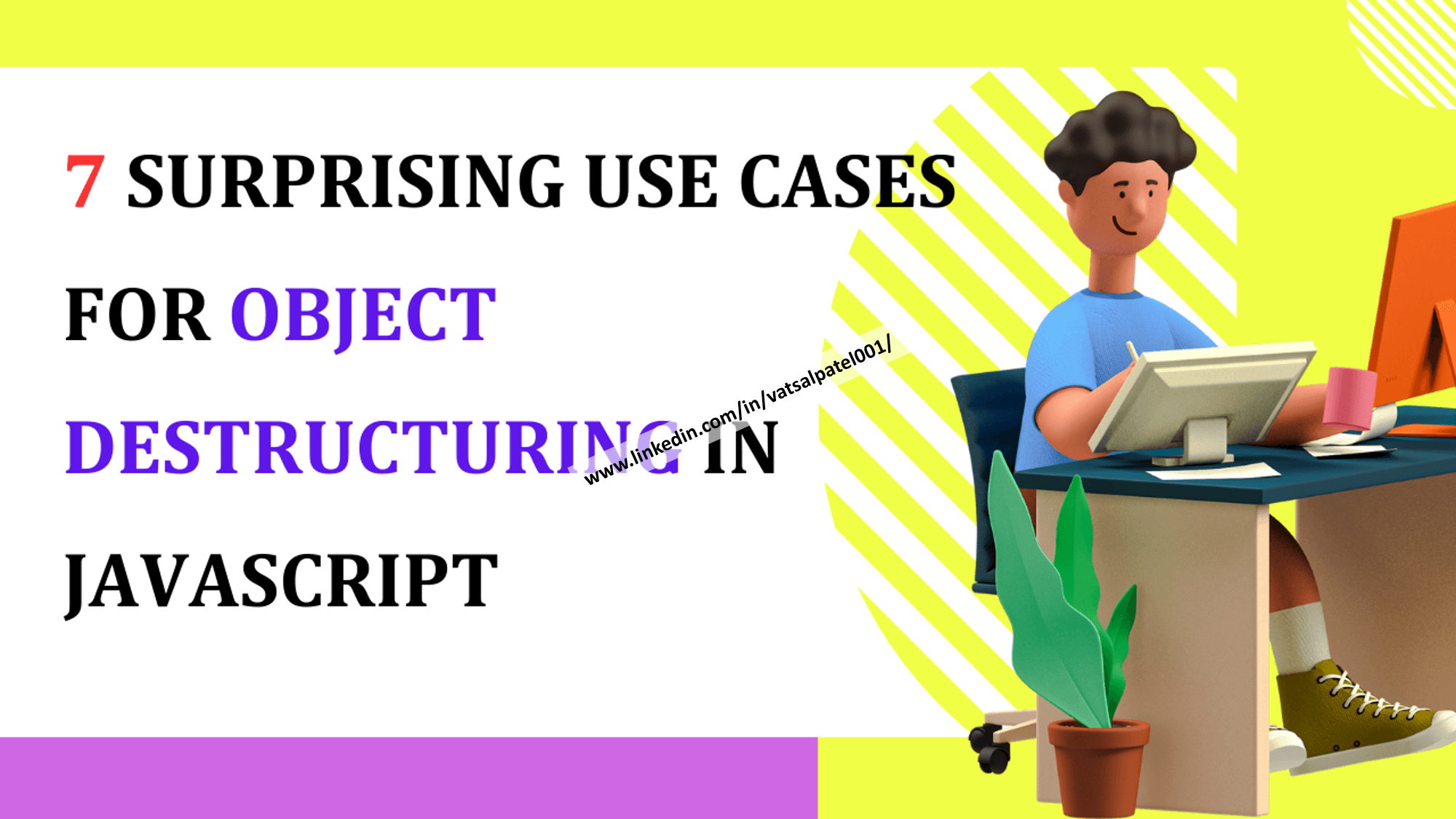When working with APIs, JavaScript’s powerful object destructuring functionality can be very helpful. Object destructuring allows you to extract specific data from an object and assign it to variables in a more straightforward and readable way, which can make your code easier to understand and maintain.
In this post, we’ll explore 7 surprising use cases for object destructuring in JavaScript, complete with code examples.
Use Case 1: Renaming Variables
One of the most useful features of object destructuring is the ability to rename variables while extracting values from objects. This can be particularly useful when working with external libraries or APIs that use different naming conventions from your codebase.
const response = {
data: {
user: {
firstName: 'Vatsal',
lastName: 'Patel'
}
}
};
const { firstName: userFirstName, lastName: userLastName } = response.data.user;
The destructuring assignment syntax { firstName: userFirstName, lastName: userLastName } creates two new variables (userFirstName and userLastName) and assigns their values based on the property names in the object being destructured (firstName and lastName, respectively).
Use Case 2: Extracting Nested Values
Another useful feature of object destructuring is the ability to extract nested values from objects. This can be particularly useful when working with deeply nested data structures, like JSON responses from APIs.
const response = {
data: {
user: {
name: {
first: 'Vatsal',
last: 'Patel'
},
email: 'vatsal.patel@example.com'
}
}
};
// Without destructuring
const firstName = response.data.user.name.first;
const lastName = response.data.user.name.last;
const email = response.data.user.email;
// With destructuring
const { name: { first: firstName, last: lastName }, email } = response.data.user;
Use Case 3: Providing Default Values
const response = {
data: {
user: {
name: 'Vatsal Patel'
}
}
};
// Without destructuring and default value
const firstName = response.data.user.firstName || 'Unknown';
// With destructuring and default value
const { firstName = 'Unknown' } = response.data.user;
In this example, we’re providing a default value 'Unknown' for the firstName variable if it doesn’t exist in the user object. This can help us avoid errors or unexpected behavior in our code.
Use Case 4: Destructuring Function Parameters
// Passing an object as an argument
function printUser({ name, age }) {
console.log(`Name: ${name}, Age: ${age}`);
}
const user = { name: "Vatsal Patel", age: 25};
printUser(user); // Output: Name: Vatsal Patel, Age: 25
// Passing an array as an argument
function printNumbers([x, y, z]) {
console.log(`x: ${x}, y: ${y}, z: ${z}`);
}
const numbers = [1, 2, 3];
printNumbers(numbers); // Output: x: 1, y: 2, z: 3
This can make function calls more straightforward and readable, and can also help avoid errors that occur when working with large objects or arrays.
Use Case 5: Combining Destructuring with Spread Syntax
const response = {
data: {
user: {
firstName: 'Vatsal',
lastName: 'Patel',
email: 'vatsal.patel@example.com'
age: 25,
city: 'New York',
country: 'USA'
}
}
};
const { firstName, lastName, ...userDetails } = response.data.user;
In this example, we’re using object destructuring with spread syntax to extract the firstName and lastName values from the response object while keeping the rest of the properties in a separate userDetails object. This can make our code more readable and avoid the need for repetitive code.
Use Case 6: Selecting Object Properties Dynamically
const user = {
firstName: 'Vatsal',
lastName: 'Patel',
email: 'vatsal.patel@example.com'
age: 25,
};
const propName = 'email';
const { [propName]: userEmail } = user;
console.log(userEmail); // Output: 'vatsal.patel@example.com'
By using object destructuring in this way, you can easily select only the properties you need from an object, and even select them dynamically based on the values of other variables or expressions.
Use Case 7: Swapping Variables
let a = 1; let b = 2; // Without destructuring const temp = a; a = b; b = temp; // With destructuring [b, a] = [a, b];
In this example, we’re using object destructuring to swap the values of a and b without using a temporary variable. This can make our code more concise and avoid the need for extra variables
Conclusion
Object destructuring is a powerful feature in JavaScript that can be used in many surprising ways. In this post, we explored 7 surprising use cases for object destructuring, complete with code examples. By using object destructuring in these unique ways, you can make your code more straightforward, readable, and maintainable.
